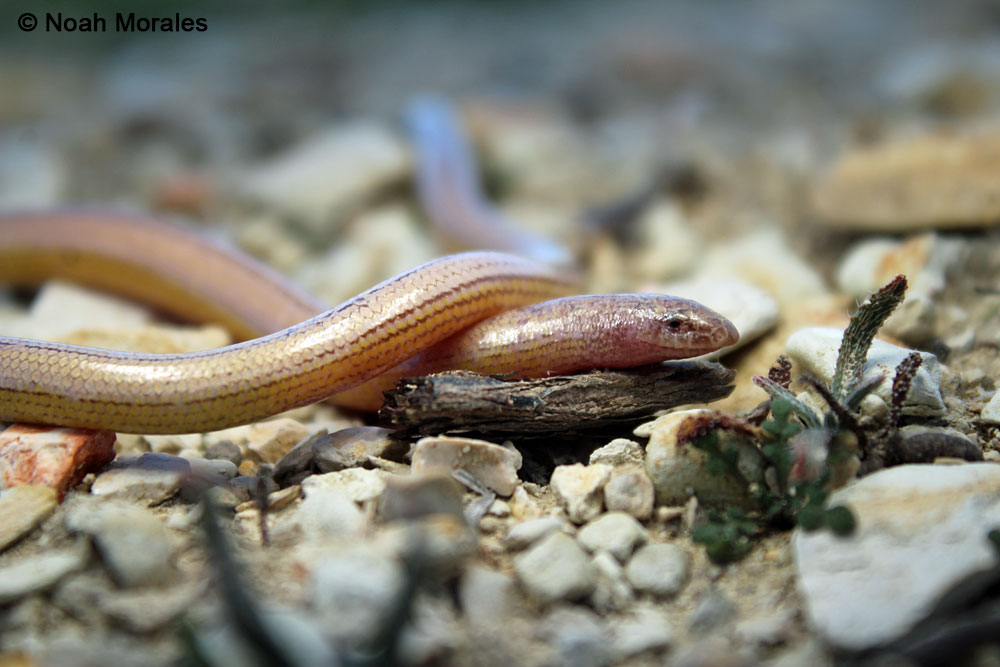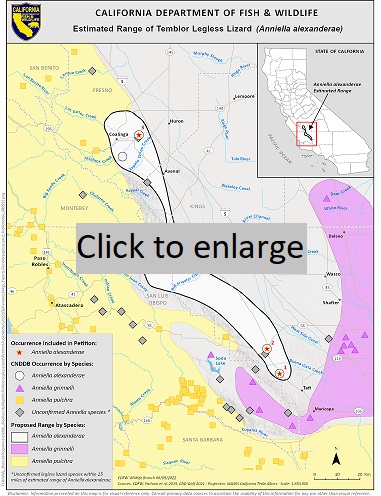
The California Department of Fish and Wildlife (CDFW) will be conducting a status review for the Temblor legless lizard (Anniella alexanderae) to inform the California Fish and Game Commission's decision on whether to list the species under the California Endangered Species Act (CESA). More details about the listing proposal and CDFW's request for public comments may be found in our CDFW newsletter. As part of this process, the CNDDB would like to encourage anyone who has observed Temblor legless lizards to submit their findings to us. People who have questions or comments about the review process should email our Wildlife Branch. The deadline for both data submission and comments is October 1, 2022 to allow us sufficient time for evaluation.
The Temblor legless lizard is a unique, limbless lizard endemic to the alkali desert scrub and annual grasslands of the southwestern San Joaquin Valley, east of the Temblor mountains at 168-466m (551-1,529 ft.) elevation. This fossorial (burrowing) and crepuscular (active at dawn and dusk) species uses the ground surface, soil, and leaf litter for feeding and mating. Temblor legless lizards eat larval insects, adult beetles, termites, and spiders. Threats include habitat loss due to oil and gas development, urbanization, agriculture, and industrial solar projects, climate change, and invasive species. Habitat loss, degradation, and fragmentation can restrict the species’ ability to feed, burrow, and reproduce.

As of July 1, 2022, the Temblor legless lizard is considered a candidate species under CESA and will therefore receive the same legal protection afforded to an endangered or threatened species. Take of this species is prohibited without an appropriate permit for scientific, educational or management purposes. For more information on permitting, visit our CESA permits web page.
We need your help in better understanding the status of the Temblor legless lizard. If you have ever seen them in the wild, submit your findings to us through our Online Field Survey Form. Together, we can help the Fish and Game Commission make an informed decision on the listing proposal for the Temblor legless lizard.